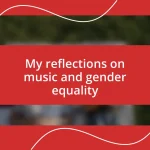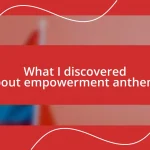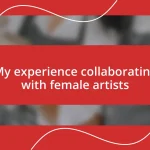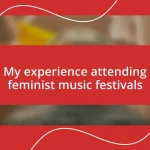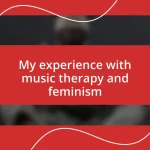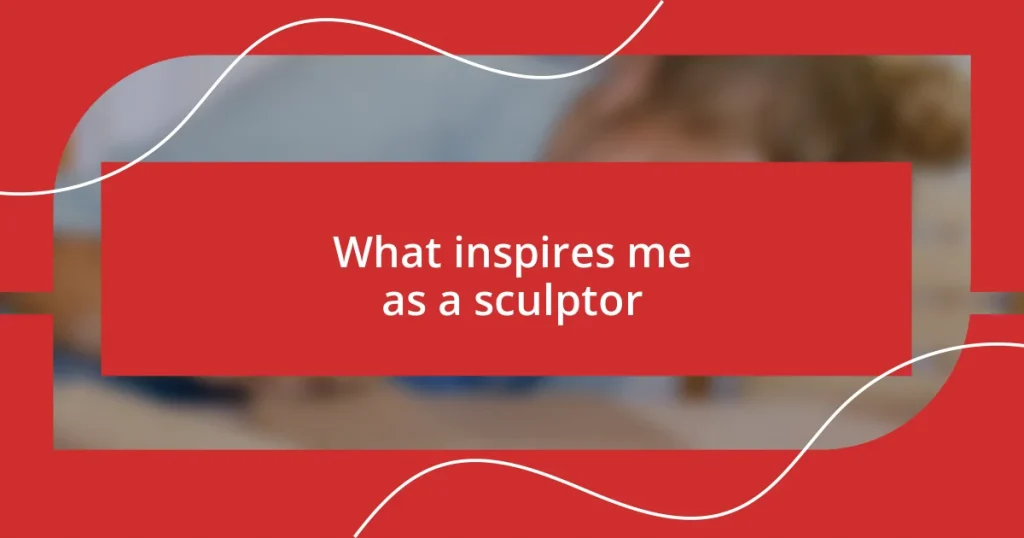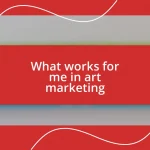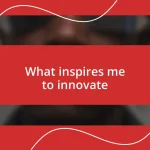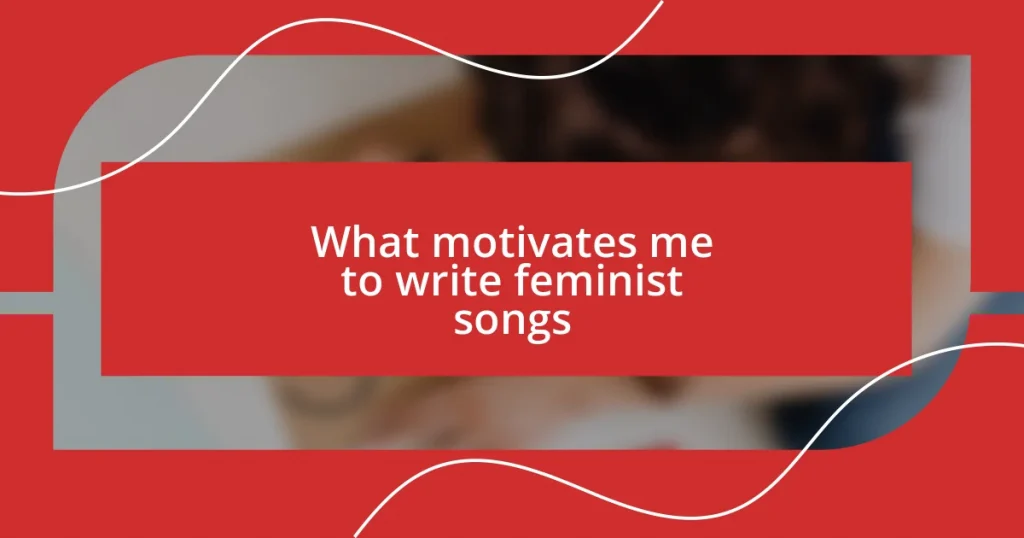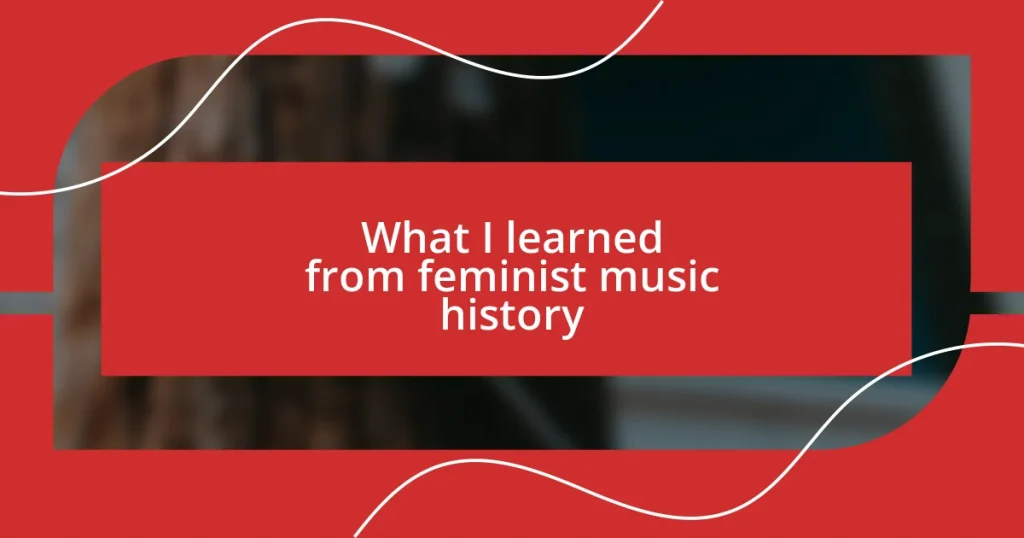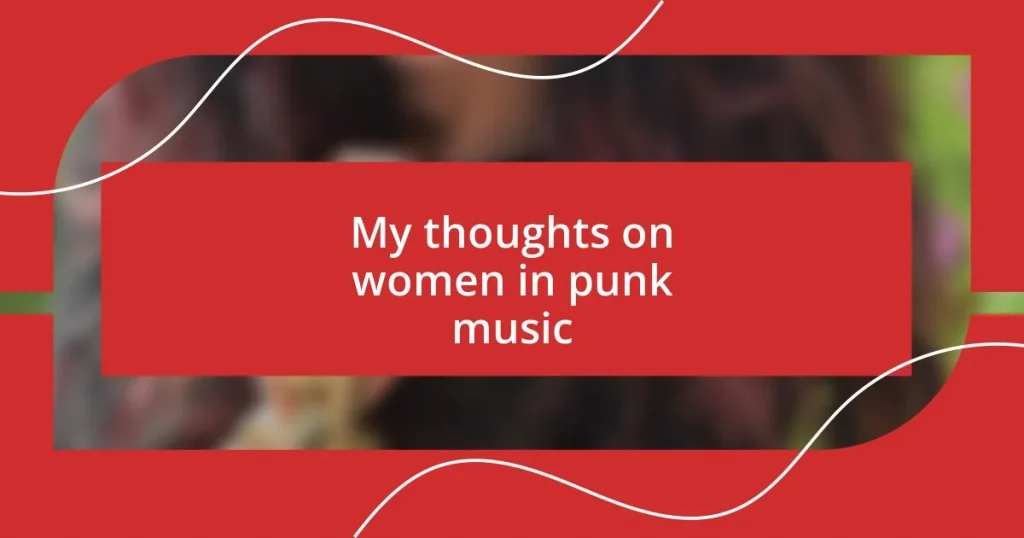Key takeaways:
- The artist draws deep inspiration from nature, using elements such as light, texture, and movement to influence their sculptural forms and emotional expression.
- Historical sculptors like Michelangelo and Rodin profoundly impact the artist’s approach, emphasizing emotion, imperfection, and storytelling in their work.
- Collaboration with other artists enhances creativity and emotional depth, allowing for shared narratives and a collective artistic vision that resonates with audiences.
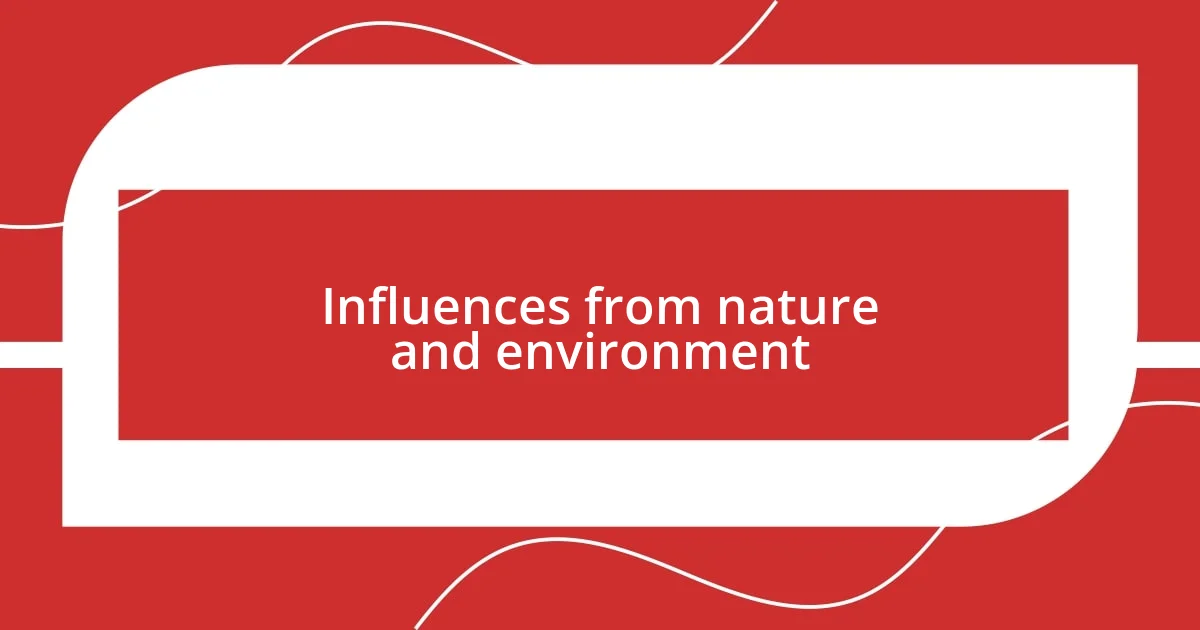
Influences from nature and environment
There’s something profoundly invigorating about walking through a dense forest, feeling the rough bark of ancient trees against my fingertips. Each tree seems to tell a story, whispering secrets of resilience and beauty. Have you ever stopped to marvel at how these natural forms inspire the shapes and textures I strive to capture in my sculptures?
I remember a summer spent near the ocean, where the rhythmic crashing of waves against the shore ignited my creativity. The fluid movement of the water inspired me to experiment with softer, organic lines in my work. It made me wonder—how can I translate the transience of nature into a form that, while solid, echoes the impermanence of the world around us?
One of my most profound experiences came from observing the play of light on a rocky landscape at dusk. The shadows danced and shifted, altering my perception of the material. This interplay of light and form left me questioning, how can I harness this dynamic in my sculptures? Each moment in nature feels like an invitation to explore deeper layers of emotion and connection in my art.
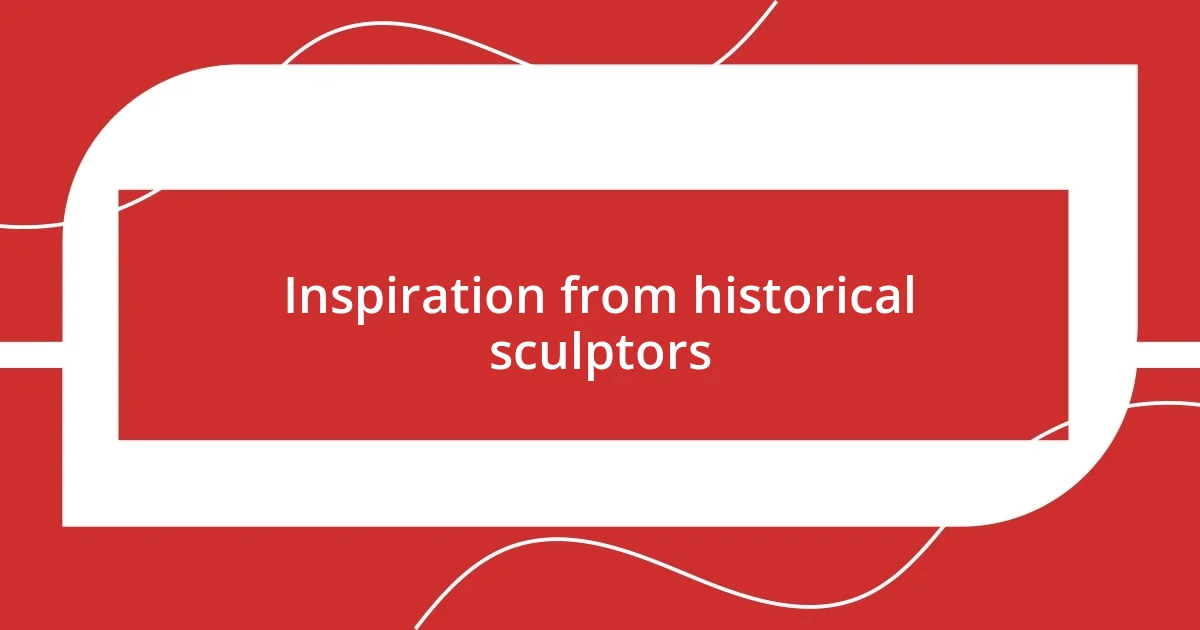
Inspiration from historical sculptors
Inspiration from Historical Sculptors
As I delve into the world of sculpture, I often find myself captivated by historical masters like Michelangelo and Rodin. Their work exudes a boundless passion for the human form, and it’s this emotional depth that stirs something profound within me. I can’t help but reflect on how Michelangelo’s “David” embodies not only physical beauty but also an intense portrayal of human struggle and resilience. It’s a reminder that art is a powerful medium for conveying complex emotions, something I strive to achieve in my own practice.
- Michelangelo: His ability to capture human emotion through intricate detailing inspires me to focus on the subtleties in my work.
- Rodin: The way he embraced rough textures and imperfect forms encourages me to embrace the beauty of imperfection in my sculptures.
- Giorgio Vasari: His emphasis on storytelling through art resonates with my desire to weave narratives into my pieces.
- Barbara Hepworth: I admire how her organic shapes reflect her connection with the landscape, motivating me to integrate more natural forms.
The more I explore these sculptors, the more I feel connected to a lineage of artists who have grappled with similar themes. Their journeys inspire me to push boundaries and explore emotions in my own unique way.
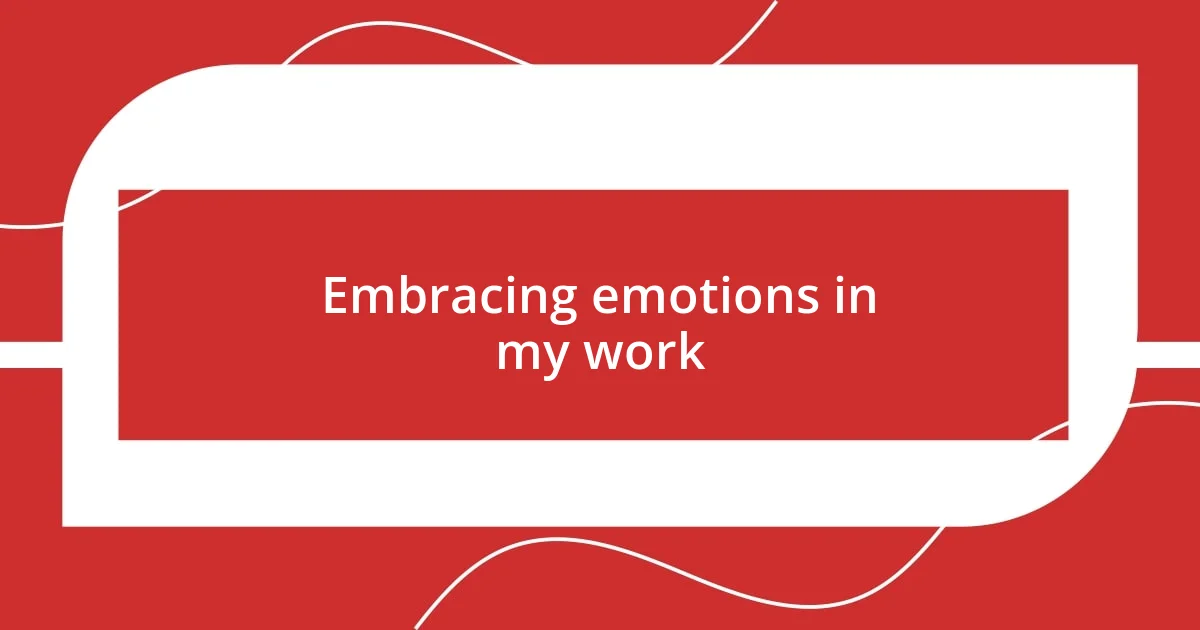
Embracing emotions in my work
Emotions are the heartbeat of my sculpting process. When I’m working with clay or stone, it becomes a dialogue between my feelings and the material. For instance, during a particularly challenging time in my life, I poured my struggles into a series of pieces that depicted tension and release. Each chip and curve revealed a layer of my emotional landscape, resonating with anyone who encountered them.
I believe that conveying emotion transcends mere aesthetics; it can forge connections with viewers on a profound level. One time, I crafted a sculpture that expressed grief, inspired by a close friend’s loss. When it was unveiled, the tears of those who viewed it served as a poignant reminder of art’s power to evoke empathy. Hasn’t everyone experienced loss? In this shared space, my work became a collective emotional vessel, bridging the gap between my story and theirs.
My approach to embracing emotions in my work isn’t always straightforward; it’s an ongoing exploration. Sometimes, I feel uninspired, and those days can be difficult. However, I’ve found that tapping into vulnerability often sparks creativity. For example, during one session, I began sculpting with my eyes closed, letting my hands guide me through musings of joy and sorrow. By surrendering to these raw emotions, the result was a piece brimming with authenticity—an embodiment of my inner world transformed into something tangible.
| Emotion | Artistic Expression |
|---|---|
| Grief | Captured through layers and distortion |
| Joy | Expressed with flowing lines and vibrant textures |
| Resilience | Embodied in strong, upright structures |
| Lament | Conveyed through shadows and deep cuts |
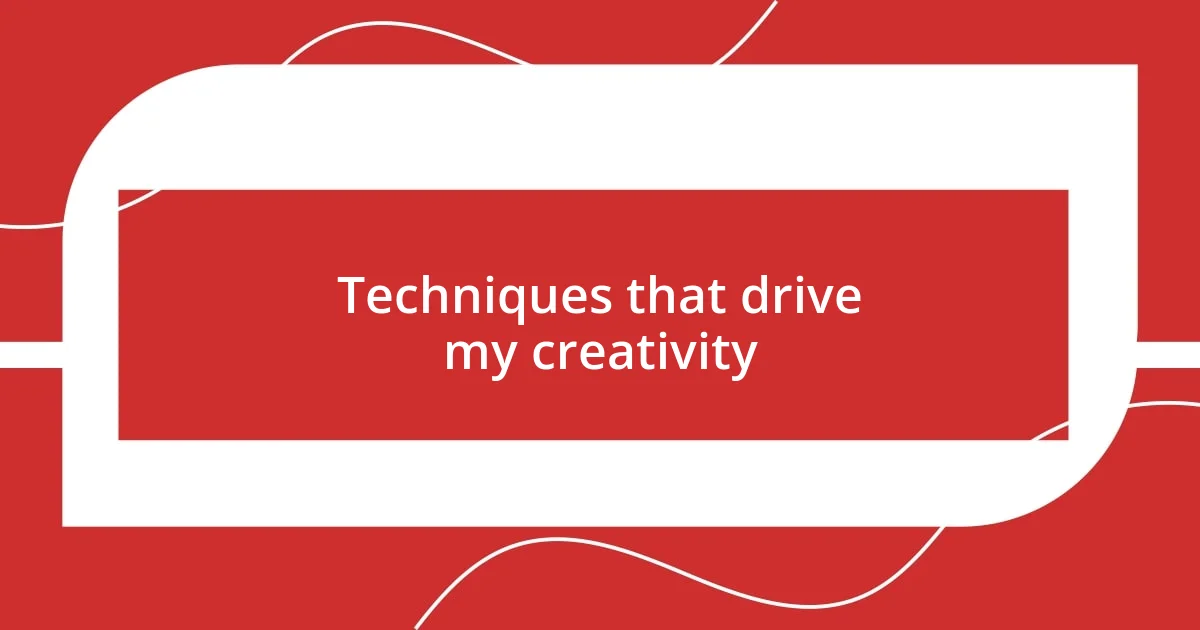
Techniques that drive my creativity
Techniques play a vital role in shaping my creativity as a sculptor. One method that has really resonated with me is the process of improvisation. I remember the first time I stood in front of a large block of marble, feeling hesitant and uncertain. Instead of following a predetermined idea, I started chipping away at the stone without a clear vision, allowing the material to guide my hands. This intuitive approach often reveals unexpected forms and expressions that I might not have otherwise considered.
Another technique that drives my creativity is the integration of mixed media. In my experience, layering different materials can create a dialogue between contrasting elements, enhancing the emotional depth of the piece. For instance, while working with clay, I started incorporating found objects, such as bits of wood or metal. I remember one sculpture that combined smooth clay with jagged metal; it visually represented the conflict between fragility and strength. This blend of textures not only drew viewers in but also evoked a multi-faceted emotional response.
I also find that experimentation fuels my creativity. There are days when I step outside my comfort zone, trying unfamiliar tools or new materials. There was one instance where I decided to sculpt directly from life—drawing inspiration from a local dancer’s movements. That experience was transformative. I found that trying to capture the fluidity of human motion in a static medium revitalized my passion and expanded my artistic vocabulary. Doesn’t everyone have that moment when they try something new and feel a rush of inspiration? For me, these techniques create a foundation for my expressive journey in sculpting, allowing me to tap into diverse emotional landscapes and deepen my connection with my audience.
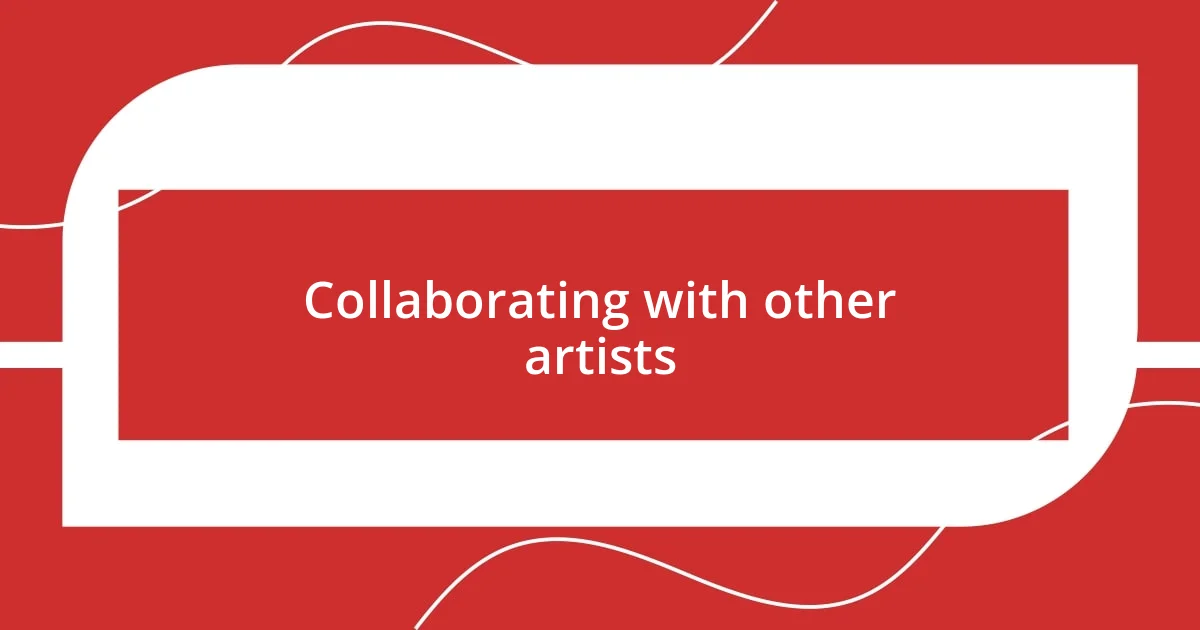
Collaborating with other artists
Collaborating with other artists has truly enriched my perspective as a sculptor. I recall my first collaborative project, where I joined forces with a talented painter. We decided to create a combined installation that blended sculpture and painting, allowing each medium to inform and elevate the other. It was fascinating to see how her colors and brush strokes breathed new life into my forms, while my three-dimensional work provided a new dimension to her art. Isn’t it amazing how creative synergy can lead to unforeseen results?
Working alongside others also encourages me to step outside my comfort zone. For instance, I once participated in a communal art festival where multiple artists were tasked to contribute to a single sculpture. The lively discussions and differing viewpoints sparked ideas I never would have considered alone. I remember feeling nervous as I merged my rough edges with their softer, more polished styles. But, looking back, that uncomfortable moment transformed into a powerful piece that echoed the strength found in community and collaboration. Doesn’t it feel rewarding when different voices unite in the pursuit of a common vision?
Additionally, collaborating fosters a deeper emotional connection to my own work. Engaging with fellow artists often opens up new avenues for vulnerability. In one project, we each shared personal stories that inspired our individual elements of the installation. This exchange of narratives not only influenced my technique but also infused my sculpture with layers of shared experience, making it resonate more profoundly with viewers. When we allow ourselves to be inspired by one another, isn’t it remarkable how our art can collectively tell more compelling stories?
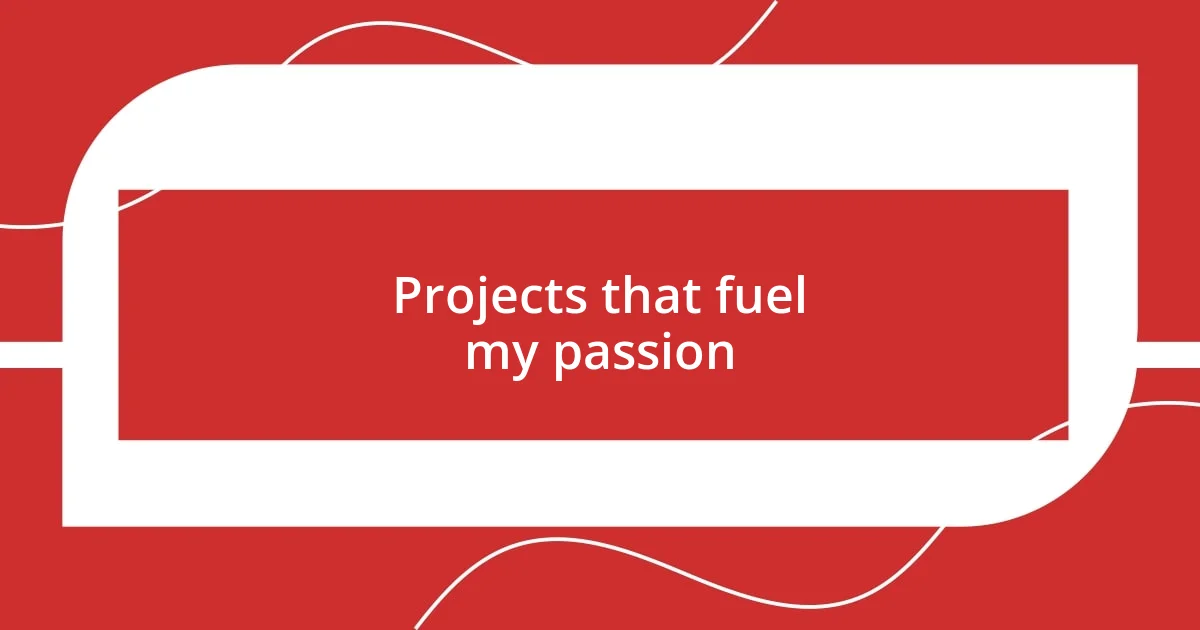
Projects that fuel my passion
One project that really fires me up is my series on human resilience. I vividly recall the first piece I created for it, inspired by stories of individuals overcoming adversity. I used a heavy, unyielding stone to depict a figure emerging from a dark, jagged mass, symbolizing the struggle and triumph of the human spirit. When I unveiled this work, I noticed tears in people’s eyes—such moments remind me why I sculpt; the ability to connect on such a deep emotional level makes every challenge worth it.
Another project that fuels my passion is the outdoor installation I designed for a local park. Working in nature has always sparked my creativity. I remember walking through the trees and imagining a piece that would interact with the changing seasons. I decided to create a series of sculptures that would appear to grow from the earth, using local stone to blend with the landscape. Witnessing families explore the installation and connect with nature and art was such a joyous experience. There’s something magical about sculptures that invite touch and exploration.
Lastly, I find immense inspiration in projects that allow for community involvement. For instance, during a recent workshop, I invited participants to contribute pieces of clay, each inscribed with their hopes and dreams. As we assembled these into a larger sculpture, I felt a palpable energy in the room. It was thrilling to watch strangers transform into collaborators, each adding a personal touch to a shared vision. Isn’t it fascinating how art can bridge divides, creating a tapestry of voices and stories? This project not only reflected our individual experiences but also wove them into a collective narrative that echoed long after the workshop ended.





